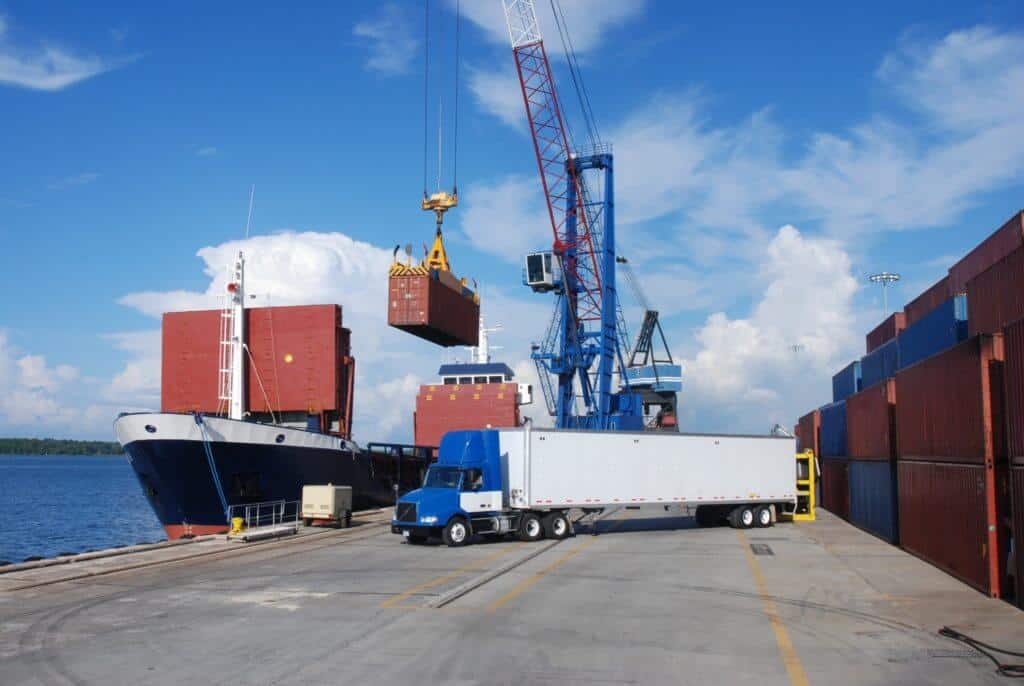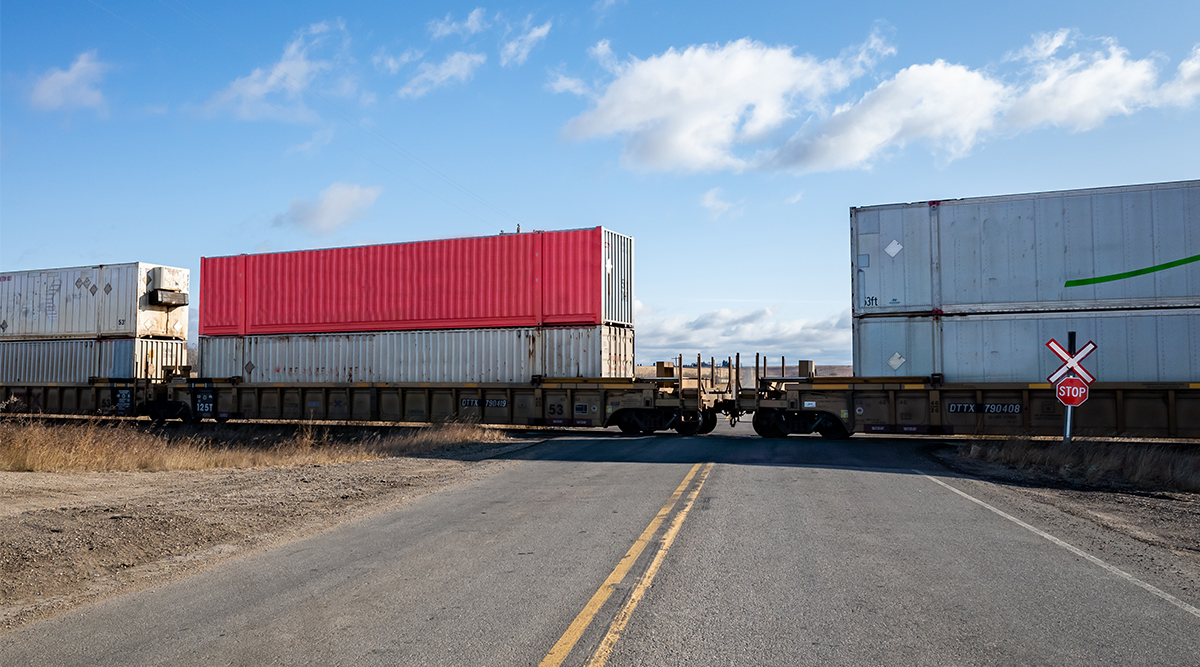Issue 12: Marking the One-Year Anniversary of the COVID-19 Pandemic
Greetings and salutations! We’re back with another edition of the Legacy Monthly Shipment, your one-stop shop for supply chain and logistics new, insights and trends.
This month marks the official one-year anniversary of the COVID-19 pandemic — and what a rollercoaster of a year it’s been. From stay-at-home orders that drove a record increase in online sales to the exposure of supply chain vulnerabilities that triggered renewed efforts to diversify the supply chain, the logistics industry — and the entire transportation sector — has weathered a turbulent series of highs and lows.
In this month’s shipment, we look to the future, while looking back on the year that was. Let’s get started.
Today’s Shipment:
- West Coast ports continue to be plagued by congestion.
- ISM report shows decline in manufacturing inventory, with no end in sight.
- ECommerce merchants seek creative ways to avoid reverse shipping costs.
- Logistics software expert weighs in on the future of transportation management.
- The Legacy team reflects on where we stand as we mark one year of COVID-19.
UPDATE
Shippers Seeks Alternate Routes in Light of Ongoing Port Congestion
Congestion continues to plague the ports of Los Angeles and Long Beach, resulting in longer lead times for shippers and higher turn times. As we reported in last month’s shipment, this prolonged congestion — which, according to some estimates, is expected to persist to some degree for the remainder of the year — has motivated many shippers to seek alternative routes.
That said, switching ports is often easier said than done, particularly for shippers looking to make the switch from southern California ports to endpoints such as Texas or Arkansas, as well as smaller companies with fewer resources and less elastic supply chains. In light of this mass exodus, the Northwest Seaport Alliance (NWSA) unveiled a strategic partnership with CMA CGM; this new partnership will enable the shipping and logistics company to expand its Golden Gate Bridge service to Seattle in an effort to reduce congestion at other West Coast ports.
This move from NWSA and CMA CGM creates new capacity in a less congested region, which is promising news for shippers who typically route through the Pacific Northwest and Oakland for those whose supply chains are nimble enough to take advantage of this alternate route. Any shipper looking to transition from southern California ports to the Pacific Northwest should note that doing so will require three- to four-week lead times on all new bookings, as well as an evaluation of cost differences for destination delivery.
As always, it’s important that shippers work with their providers to evaluate different options before coming to a decision; these options can vary depending on the final destination, volume of cargo, cost considerations and so on. For shippers with consistent volume and flexibility, adopting a long-term strategy with dynamic port options can provide some relief from congestion now and in the future.
Although this ongoing port congestion — amongst other supply chain challenges — might seem interminable, it’s helpful to remember that things can and will get better. That said, as these challenges recede, new ones will arise, whether due to labor shortages, equipment issues, geopolitical events or some other cause. The more flexible your supply chain, the easier it will be to adapt, so talk to your provider and sourcing partners about long-term strategy.
REPORT
Manufacturing Inventory Declines as Customer Demand Remains Strong
According to a recent report from the Institute for Supply Management (ISM), manufacturing inventory levels began to decline in February, following four months of steady growth. The Inventories Index registered at 49.7% — 1.1 percentage point lower than in January, officially indicating contracting inventory; the Customers’ Inventories Index also remained in “too low” territory at 35.2%, tying its all-time low. Experts attribute this decline to strong consumer demand paired with supply chain delays; these delays are caused by a combination of factors, including ongoing port congestion, critical materials shortages and lack of labor availability.
“The coronavirus pandemic is affecting us in terms of getting material to build from local and overseas third- and fourth-tier suppliers,” said one ISM panelist, a representative from an electronic goods company. “Suppliers are complaining of [a lack of] available resources, [people] for manufacturing, creating major delivery issues.”
“Prices are going up, and lead times are growing longer by the day,” said another panelist, a representative in the machining industry. “While business and backlog remain strong, the supply chain is going to be stretched very [thin] to keep up.”
This accelerated consumer demand is an encouraging sign that the economy is rebounding, and that industry and retail activity is increasing. While this is certainly a positive indicator, it’s also forcing manufacturers — amongst others — to draw down on existing inventory without adequate supply to replenish it. Under ordinary circumstances, companies could reliably forecast supply and demand, but the pandemic has disrupted this natural balance, with supply now trailing demand by a considerable distance. Additionally, although demand is strong at the moment, that won’t be the case forever — inevitably, demand will slow with a wave of supply behind it, causing importers to carry excess inventory.
In times like these, when demand is exceptionally strong, it’s important to resist the urge to start pushing out orders to suppliers in an attempt to build a strong supply pipeline; though well-intended, such efforts often prove to be an overcorrection and can easily backfire. Instead, importers should pay close attention to their sales forecasts, inventory levels and relevant economic indicators in order to match supply with demand as accurately as possible.
BRIEF
With Returns on the Rise, Retailers Look to Avoid Reverse Shipping Costs
If there’s one lesson that eCommerce retailers have learned from the COVID-19 pandemic, it’s that you have to take the good with the bad. With unprecedented online sales comes a higher rate of returns — 30% or higher, in fact, depending on the category, and three times the rate in physical stores.
Though many merchants have taken preventative measures to discourage returns, including virtual dressing rooms and try-before-you-buy offers, they continue to be the cost of doing business — an exceedingly high one. According to the National Retail Federation, consumers returned an estimated $428 billion in merchandise in 2020; additionally, for every $1 billion in sales, the NRF estimated the average costs of returns to be $105 million. Though the holiday return season has ended, it stands to reason that if online sales volume for 2021 is anywhere close to what it was in 2020, we can likely expect to see inflated returns costs, as well.
Rather than eat the cost of reverse shipping, major retailers such as Walmart and Amazon have started to encourage customers to hold onto to would-be return items, all the while processing refunds.
This ongoing battle against reverse shipping costs underscores a larger issue amongst eCommerce retailers. Over the years, a growing number of merchants have invested in eCommerce channels — a trend accelerated by the pandemic — without fully understanding or evaluating the costs. Though there are undoubtedly cost-savings in selling direct to consumer, either through your own channel or through Amazon, there are also backend costs that enter into the equation, especially when it comes to reverse logistics.
Today’s retail market has largely consolidated into online sales, major retailers, discount outlets and boutiques, with malls and other physical storefronts going the way of the dinosaurs. Under these conditions, retailers have faced mounting pressure to sell online, or otherwise fall out of the market.
In order to succeed in the online market, retailers must have a solid omni-channel supply chain, which requires a high degree of strategic planning, tactical execution and alignment across multiple entities. It also requires retailers to orchestrate each of those elements in such a way that they’re able to strategically deploy inventory to distribution centers and fulfillment warehouses; this enables them to fulfill the right orders at the right time from the right locations, all while keeping costs relatively low.
There are a number of opportunities for retailers to increase supply chain control, including:
- Synchronizing inventory to service multiple sales channels
- Shortening segments within the supply chain
- Optimizing fulfillment costs
- Establishing reliable and consistent options for transportation capacity
- Recruiting and developing productive workforces
- Engineering efficient warehouse operational processes that drive throughput
- Connecting with supply chain trading partners through integrated technology solutions
- Building redundancy and flexibility into distribution and transportation networks in order to increase resilience in the face of today’s complex and uncertain environment
ECommerce sales have risen at a strong and steady pace over the last decade or so, with no sign of slowing down. This has led to the emergence of an underserved market of small- and mid-sized businesses that need to sell goods online — and to serve that market, a segment of new 3PLs experienced in tech and that understand the market-facing aspect of eCommerce fulfillment but lack deep supply chain operational expertise. With the pandemic starting to show signs of slowing, retailers will need to regain control of their supply chain. To do so, it’s imperative that you partner with an experienced 3PL that not only brings technology and infrastructure to the table, but supply chain knowledge and operational expertise, as well.
PODCAST
One Year into the Pandemic, The Way Forward Starts to Become Clear
The rules of transportation management have changed — so sayeth Stephan Sieber.
In a recent episode of Talking Logistics, the CEO of Transporeon — a cloud-based logistics software company — explained to host Adrian Gonzalez that he sees 2020 as having two distinct phases, delineated by the first and second waves of the pandemic.
“Our customers reacted in different ways when the virus first struck in March and April than when the second wave hit,” said Sieber. “Initially, they were just trying to survive. In the second wave, it became a much more dynamic step-by-step process of moving forward. Understanding capacity and pricing indices and adapting transport assignment strategies in the short term became much more important. For example, we’ve seen a much greater use of the spot market versus contract carriers due to the uncertainty in the market. Responsiveness, flexibility and adaptability have become much more important.”
Looking to the future, Sieber predicts that “real-time insight and the ability to act” will remain crucial for shippers, carriers and other transportation stakeholders, and that investment in digital tools and platforms will be necessary in order to optimize transportation management and to eliminate waste and idle capacity within the system. Such tools and platforms will not only enable shippers, carriers and 3PL providers to access key data, thereby increasing visibility and reducing volatility; they’ll also enable these groups to build a community that they can leverage to better match demand with capacity.
It’s no secret that trade is more dynamic and more global than ever before — and with that comes more opportunity for disruption. Data has become an increasingly valuable asset in this often unpredictable environment, enabling shippers to develop highly adaptable supply chain strategies. To that end, it’s imperative that shippers look to software solutions that enable them to access real-time data and determine how to evaluate that data within the context of their business. It’s also important that shippers pay attention to the right indicators — fuel prices, ISM data, changes in the labor market, changes in capacity, geopolitical events and industrial real estate trends can all have both short-term and long-term ramifications and should be closely monitored.
REFLECTION
How COVID-19 Has Helped Us Prepare for the Future
Though the past year has proven challenging for our industry, it has also made us far more aware of supply chain risk and taught us the value of developing strategies that enable us to adapt to those risks, including:
- Sudden changes in capacity by lane due to inclement weather or other disruption
- Rapidly changing distribution patterns (i.e. retail to eCommerce)
- Natural disasters that consume national capacity due to regional rebuild
- Geopolitical events — tariffs, conflicts and so on — and their effects
- Unplanned production downtime at Tier One and Tier Two suppliers
- Lack of access to primary sources for goods
- Rebounding volumes chasing demand, resulting in sharp capacity crunches
- Equipment shortages
- Precipitous increases in costs
- And more
The Legacy team recommends that shippers look across their networks and run scenarios against specific risks, then discuss potential strategies for mitigation. Seek the input of your providers, as well as available technologies within the industry.
As painful as the past 12 months have been, many companies have acclimated to these sudden changes by ramping up new multi-channel distribution, shifting production to new sources and adapting distribution channels. In the end, we’ll likely look back and realize the valuable lessons we have learned and embrace the opportunities ahead. In that spirit, we’re hopeful for the future — things can only go up from here.
Thanks again for reading the Legacy Monthly Shipment. For additional logistics insights, please check out our blog or resource center — or, better yet, talk to one of our specialists directly.
Until next month’s Shipment, this is the Legacy team, signing off.
Get Insights. Stay Ahead.
Get the latest news and insights via email on warehouse improvement, transportation optimization, labor strikes and international shipping rate changes.
Popular Posts
Search Posts
-
6 Cornerstones to a Successful 3PL-Customer Relationship
Hiring a third-party logistics (3PL) provider is a strategic approach for businesses to increase their capacity without expanding their...
+ Read more -
Canadian Rail Strike? – What We Know So Far
On May 1st, CN (Canadian National Railway) and CPKC (Canadian Pacific Kansas City) rail workers voted overwhelmingly to authorize a strike...
+ Read more -
2024 Q1 Freight Landscape: Trends, Challenges, and Predictions
As the first quarter of 2024 comes to an end, here are some observations over the past few months as well as predictions about the trucking...
+ Read more











